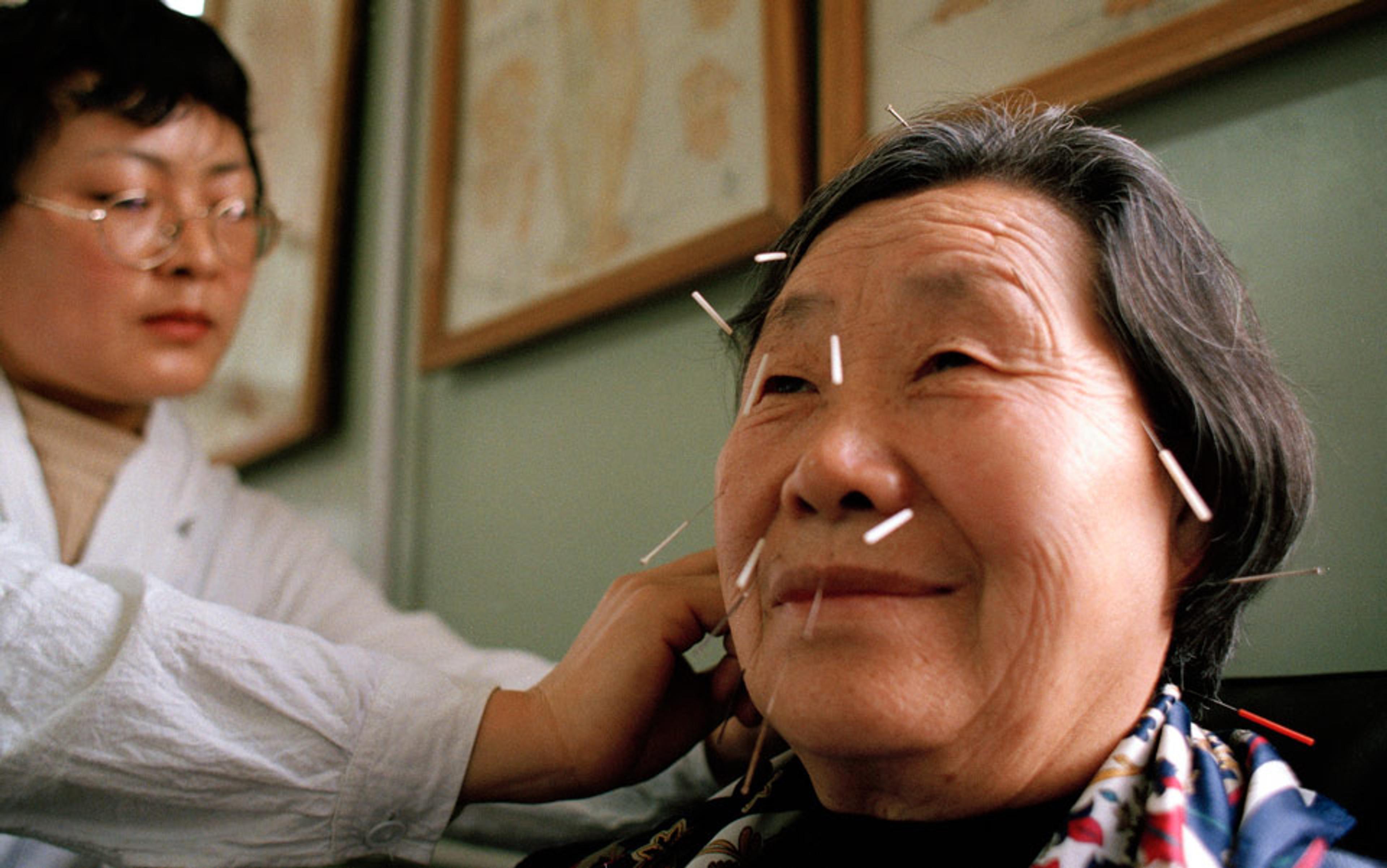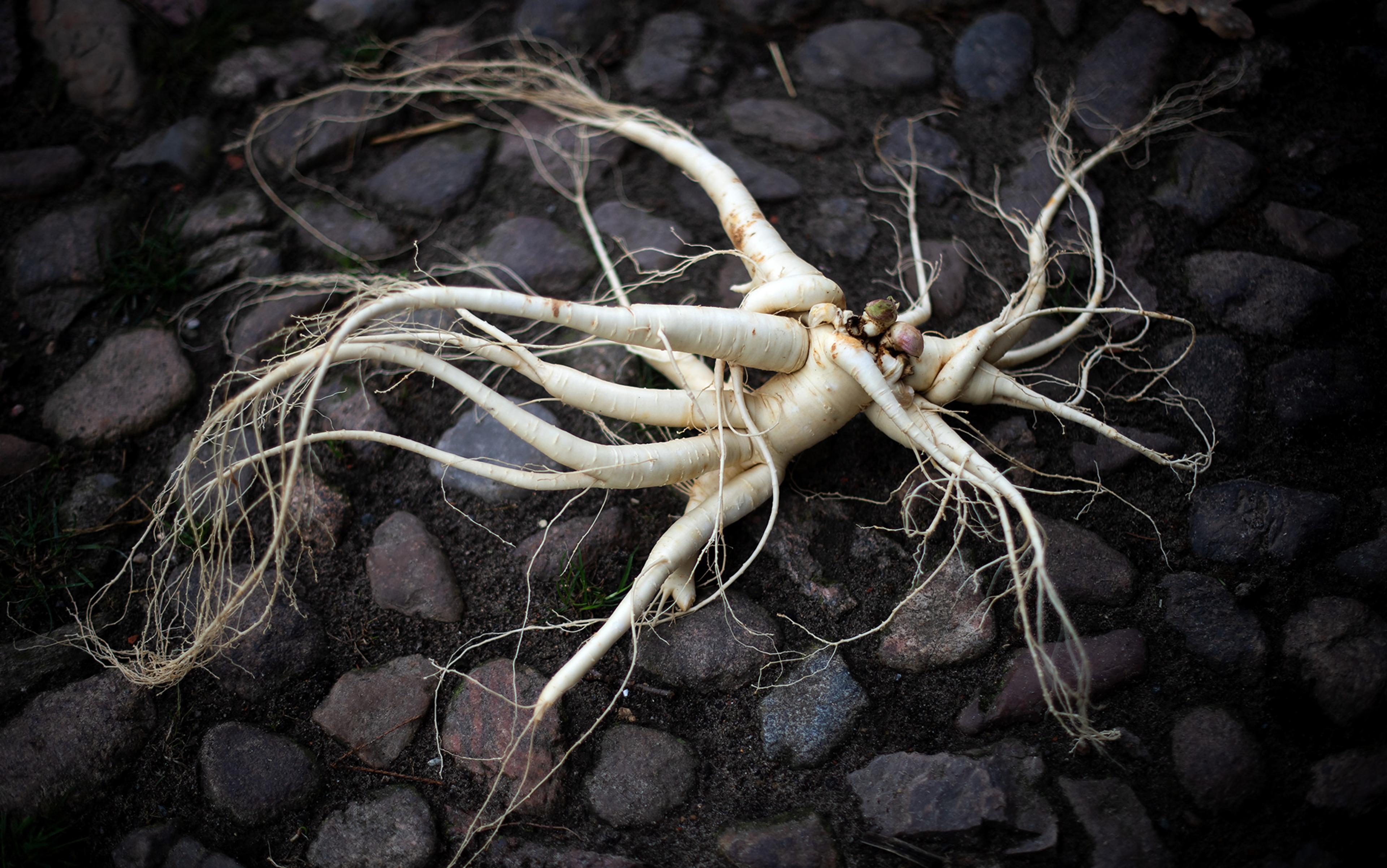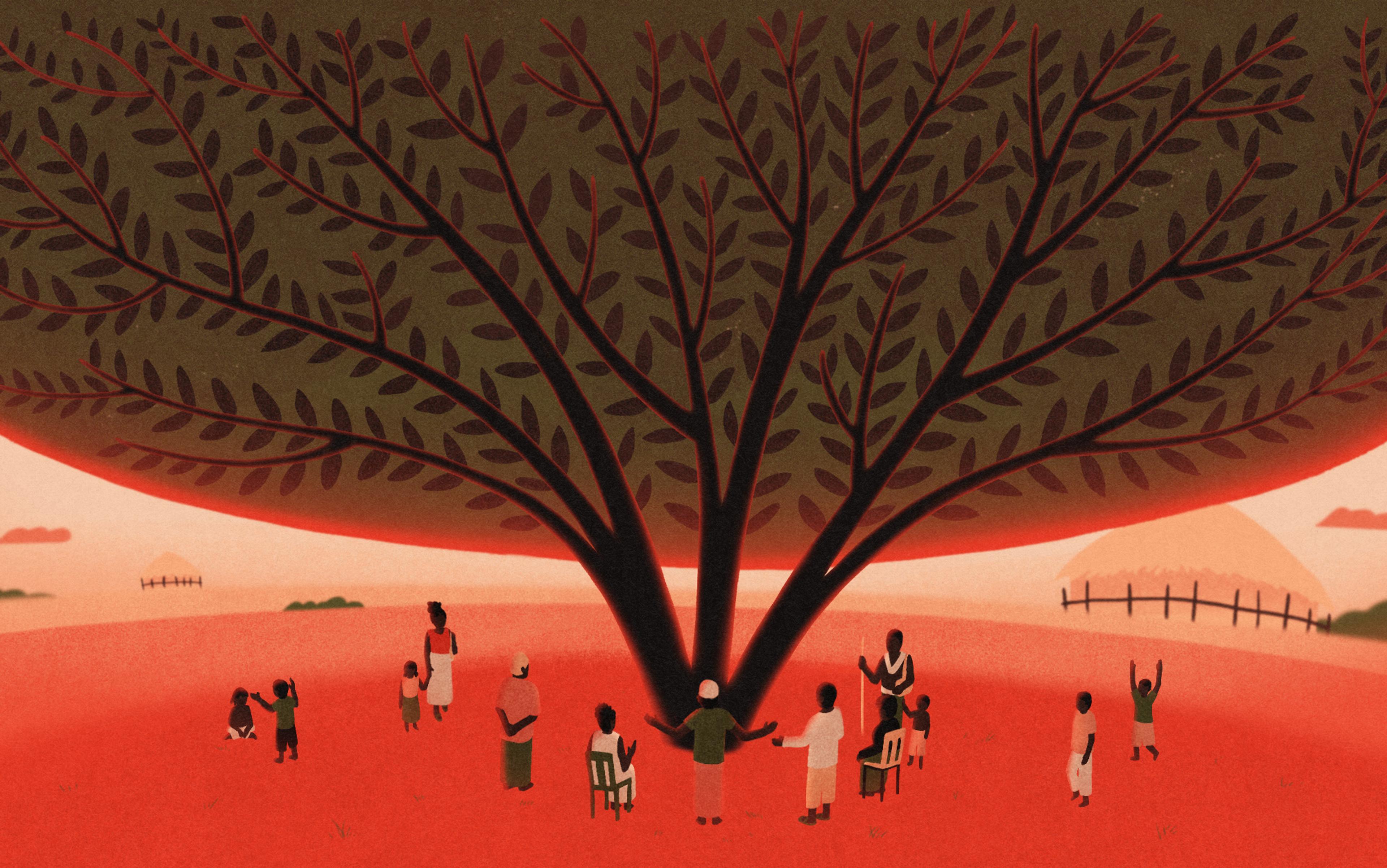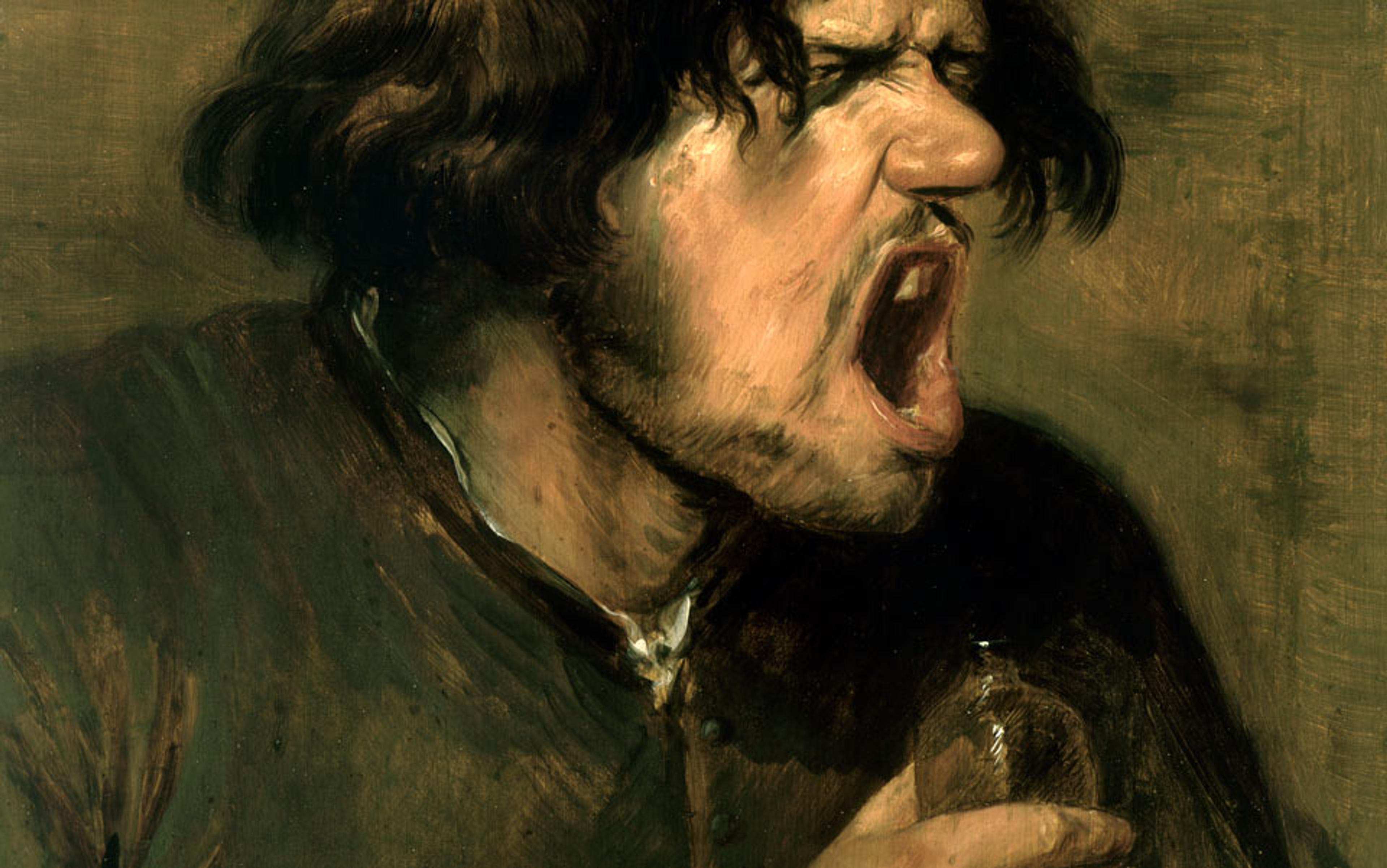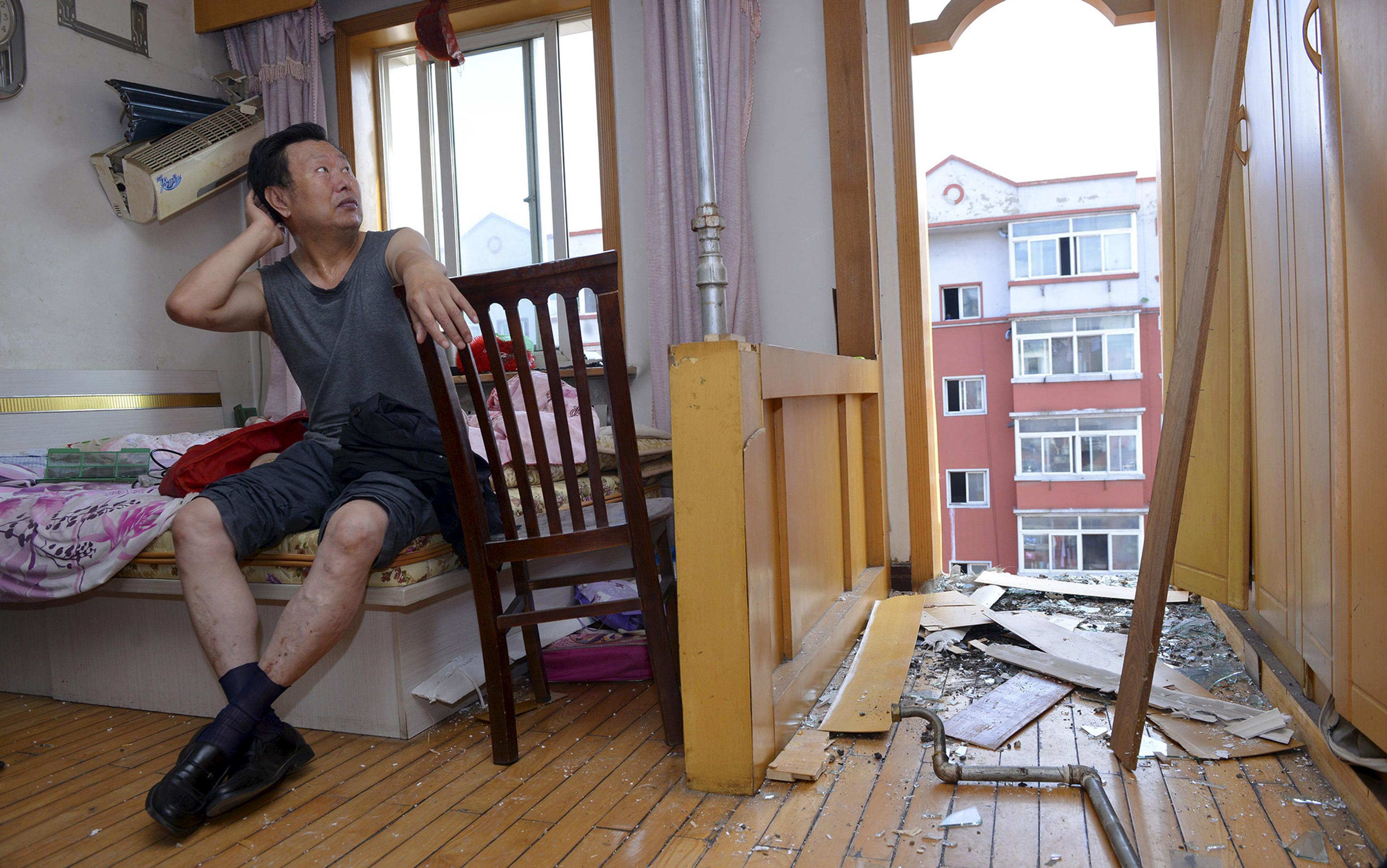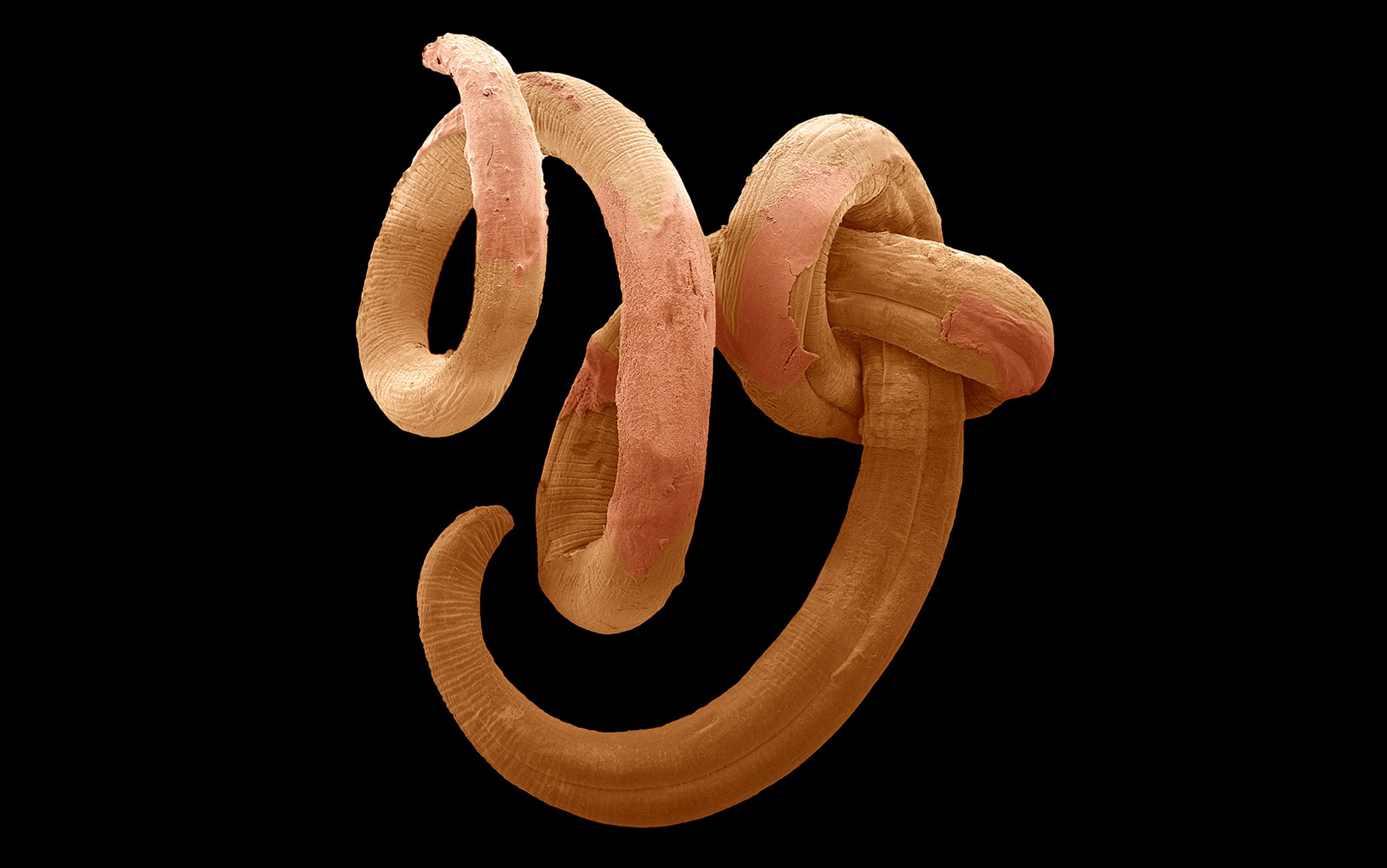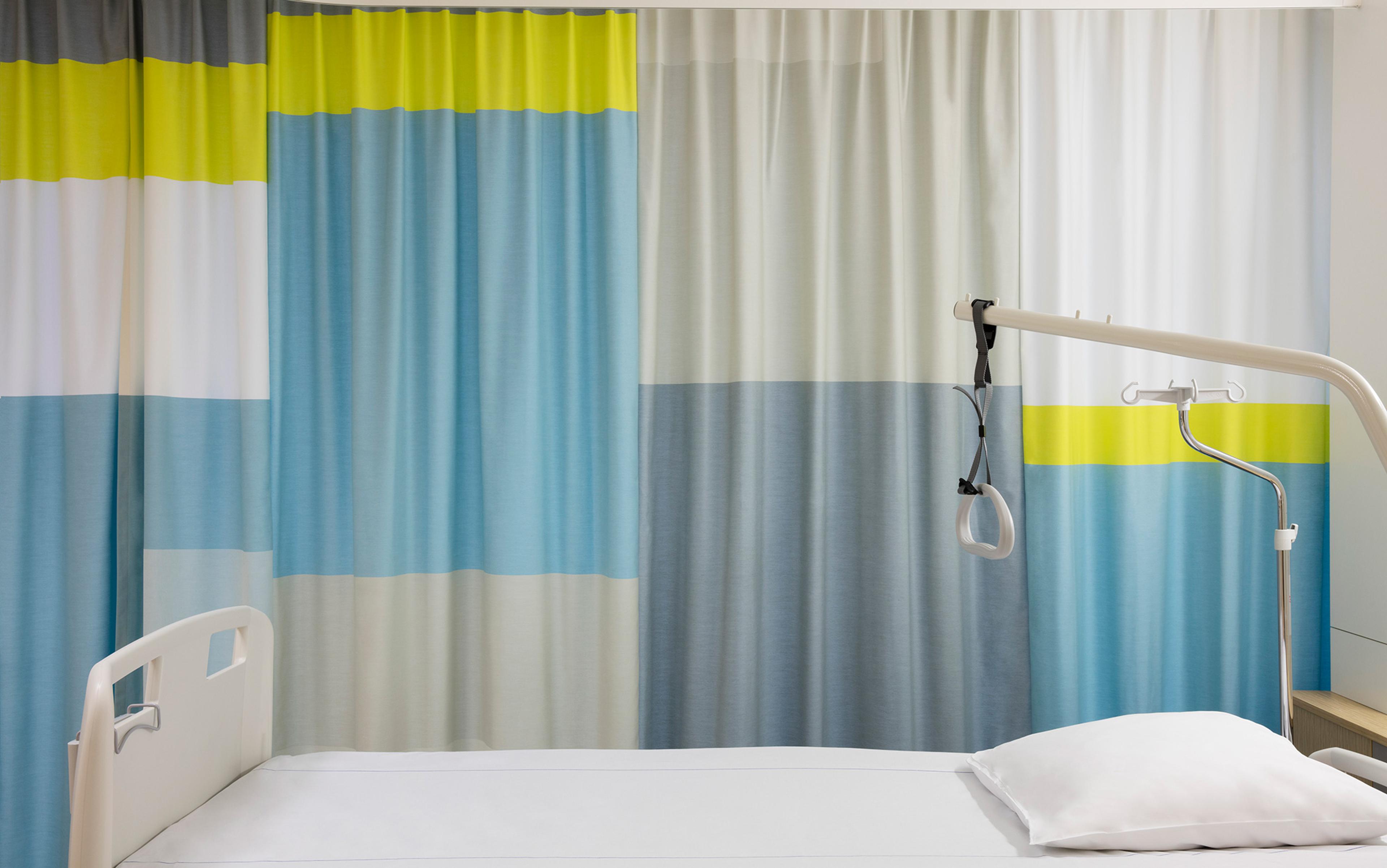A few minutes after getting her traditional Chinese medicine injection in a hospital in Chongqing, southwest China, 25 year-old Zhang Mingjuan began hyperventilating. She’d had only a slight fever, but wanted to try the appealing combination of traditional medicine with the more rapid vector of a jab. Now she felt like she was dying, and she passed out.
In the hospital emergency room, where she awoke, she was told that quick treatment saved her life from the allergic reaction to the shot — a mixture of herbs and unlabelled antibiotics. Later, doctors told her that she would have been better off sticking to hot water and aspirin.
The combination of traditional medicine and hospital setting, of pseudoscience and life-saving treatment, might seem strange. But in modern China, traditional Chinese medicine (TCM) is not the realm of private enthusiasts, spiritual advisers or folk healers. It’s been institutionalised, incorporated into the state medical system, given full backing in universities, and is administered by the state. In 2012, TCM institutes and firms received an extra $1 billion in government money, outside the regular budget. TCM as a whole is a $60 billion dollar industry in mainland China and Hong Kong.
In pharmacies, TCM prescriptions are jumbled on the shelves alongside conventional drugs. Staff often see little difference between prescribing one or the other and don’t tell patients whether they’re receiving TCM or conventional treatment. Approximately 12 per cent of national health care services are provided by TCM facilities, although that figure includes conventional medicine done at TCM institutions.
Every major Chinese city has a TCM hospital and university. While folk medicine shops have the cluttered appearance of an alchemists’ den, institutionalised TCM presents itself as clean, organised and scientific, with staff, even administrators, bustling around in white lab coats. The majority of TCM drugs are sold in foil packets and shiny capsules.
Beautiful and intricate as they are, these theories don’t correspond with the messy realities of bodies cobbled together by the long randomness of evolution
Yet the theoretical underpinnings of these treatments is essentially pre-modern. Traditional Chinese medical theories see the body as composed of the interaction of different elements, processes, and fluids: the elements of fire, water, earth, metal, and wood; the interplay of yin, yang, and ‘qi’ (the life force). Each of these comes with its own correspondences: fire matches the south, red, heat, the heart, and the tongue. The body is a microcosm that mirrors the macrocosm of the universe, a grand design reflected in each person’s form
Illness arises when excesses disrupt the balance between the elements, manifesting in wind, fire, cold, dampness, dryness, and heat. Nature provides symbolic clues to treatments that can fix these imbalances: a herb that looks like the heart, the hand or the penis can be used to treat ailments in those body parts. Animals, too, carry cures within them: the roaring power of a tiger can be extracted from its bones; the strength of an ox from its gall stones. Many of these ideas are recognisable from pre-modern Western thought: the four humours of Galenic medicine or the principles of a monastic herbarium would not be foreign to Chinese healers. Nor would Leonardo da Vinci’s Vitruvian Man, limbs outstretched, and encapsulating in the human body the proportions of the universe, look out of place in a Chinese medical classic. Humans look for patterns, and for projections of themselves into the universe.
Beautiful and intricate as they are, these theories don’t correspond with the messy realities of bodies cobbled together by the long randomness of evolution. The human body isn’t a mirror of cosmic realities any more than it is a perfectly designed machine, but a clumsy improvisation, full of incompetent or redundant parts. Traditional Chinese medical theory suffers from the same problems that Renaissance thinkers identified in astrology and other pre-modern sciences: ‘This idea is very pretty, rather than natural and true,’ as the 15th-century philosopher Giovanni Pico della Mirandola wrote. Like the bodily humours, the equally immeasurable yin, yang and qi, as well as the body’s ‘meridians’, belong to the realm of spiritual and psychological practice, not scientific inquiry. That doesn’t render them less real, but it’s a shaky basis for a biological theory.
Still, even if traditional theories of medicine do not describe bodily reality, they are important in other ways. The idea that an illness might be a symptom of a lack of balance in our lives resonates powerfully. The idea of spirit in all its guises still infuses Western culture, but it can’t be measured any more than qi can. Nor any more easily dismissed: Robert Burton’s The Anatomy of Melancholy (1721) is suffused with humours, astrology and demons, but it’s still a book of wisdom and insight — both into our own minds and those of Burton’s day.
The spiritual and psychological insights of past Chinese writers and thinkers on medicine are still meaningful, and they provide us with keys to other great texts of the Chinese past. Just as a student of Shakespeare needs an understanding of Galenic medicine — ‘I’ll curb her mad and headstrong humour,’ says the choleric Petruchio of his equally volatile new wife in The Taming of the Shrew — so a student of a Chinese classic such as The Dream of the Red Chamber (1791) needs an understanding of TCM. But though these insights might inform good medical practice, or the ways in which we treat our own bodies, they’re not a basis for science, or for reproducible treatment.
For all that, TCM ideas suffuse Chinese popular thinking about health and there’s a fierce defensiveness associated with them. Opposition to TCM makes a person stand out, even when the critic is inside Chinese culture. In the ‘anti-TCM’ group on the social media site Douban, with its symbol of a crossed-out yin-yang sign, posters share experiences of bitter family arguments. Wu Meng, 25, is firmly opposed to the practice. ‘I really like [the popular scientific crusader] Fang Zhouzi’s books,’ she told me, ‘And anyone who thinks can see that TCM’s just rubbish, and not scientific at all. But even educated people believe in it. My boyfriend is in finance, and super-smart, but he has a whole drawer full of this crap. My mother is a [conventional] doctor, but my family thinks I’m just against TCM out of contrariness, and that I’ll change my mind.’
At the public level, opposition comes with greater costs. Zhang Gongyao, 56, started studying TCM in 1974, as a ‘peasant straight out of senior school. Because of the Cultural Revolution, I had lost my hope for a reliable future. So I studied and practised TCM in the hope of a reliable future.’ Over the years he lost faith in TCM, especially in the institutionalised system. He became a professor of philosophy, specialising in medical history, at the Central South University in Hunan, and in 2006 launched an online petition calling for the removal of TCM from the government-run medical system. Although it was signed by more than 10,000 people, it was dismissed by the State Administration of Traditional Chinese Medicine (SATCM) as a ‘farce’, with Zhang accused of being ‘ignorant’.
At a time when virtually every other traditional practice was being consigned to the bonfires, TCM practitioners had some ideological and governmental shelter
‘Since then,’ he said, ‘I have borne a lot of pressure from the government, from the university, and from the existing TCM institutions. I can’t publish my papers freely; I’m blocked from the normal promotions and salary raises; and I can’t even always lecture to my students.’ Zhang’s fate is not unusual for anyone who challenges a government institution in China, whatever the area. But why has TCM retained such power and influence — both popular and official — when traditional medicine in China’s neighbours, such as Korea and Japan, has been pushed to the margins?
The institutionalisation of TCM was not inevitable. It arose out of China’s damaged encounters with the West, out of the ideological struggles of the 1930s, and the political needs of the early People’s Republic. And like most traditions, from kilts to Christmas trees, it’s a lot younger than people think.
Until the 19th century, there was no such thing as ‘Chinese’ medicine in China, just medicine. This encompassed an eclectic and often-changing range of treatments and practices that generally harked back to ancient medical texts, such as the Huangdi Neijing, the ‘Inner Classic of the Yellow Emperor’, but it was also willing to experiment and innovate. Like European medicine, it could be empirical and curious: the Neijing, for example, stresses the importance of taking case histories. Given that ideas were transmitted along the Silk Road from Europe, India and the Middle East, and vice versa, the resemblance between TCM and medieval European medicine is probably not all parallel development.
When Chinese doctors first encountered European medical ideas, they did so as curious equals, willing to concede that the newcomers had some things right, but also recognising that other treatments and beliefs lagged behind Chinese practice. Before the mid-19th century, a patient was probably better off going to a Chinese doctor than a Western one; the odds of either being helpful were slim, but at least the Chinese doctor, thanks to a disdain for internal intervention, wouldn’t slice you open with unsterilised instruments.
But as Western medical science was revolutionised by germ theory, by anaesthesia, and by public sanitation, the gulf between it and medicine in China widened, coinciding with China’s growing unease about its place in the world. Humiliated in the Opium Wars (1839-1842, and 1856-1860), threatened from without and collapsing from within, Chinese intellectuals struggled to see the path forward. For some, it meant harking back to lost greatness; for others, it meant abandoning the old for newly imported, superior methods. ‘Substantiate in detail the theory that Western methods all originate from China,’ asked one exam question for applicants to the civil service after the exams were revised in 1900, while ‘Explain why Western science studies are progressively refined and precise’ asked another.
In 1890, the Qing scholar Yu Yue published a full broadside against tradition, On Abolishing Chinese Medicine, after losing his wife and children to illness. In 1896 Lu Xun, China’s greatest modern writer, watched his father die as the family’s wealth was squandered on increasingly expensive and rare traditional treatments; he later trained as a Western doctor in Japan in reaction against what he called the ‘unwitting or deliberate charlatans’ of traditional medicine. In one of his bleakest stories, ‘Medicine’ (1919), a family desperately seeks a magical cure in the blood of an executed rebel.
The Nationalist government of the 1920s took a far greater interest in public health, seen as a vital part of China’s revival. Strong individual bodies meant a strong national body, one no longer seen as ‘the sick man of Asia’. With this came the need to organise and regulate doctors. But traditional and Western doctors had formed separate medical associations, each with a keen sense of their own importance. When, in 1929, the ministry of health proposed to abolish traditional medicine entirely, TCM doctors promptly called a nationwide strike, closing pharmacies and clinics across the country. As a result, two separate and parallel government institutions were created to deal with doctors — one ‘Chinese’ and one ‘Western’. Despite the government push to abolish TCM in 1929, in 1935 the Nationalist Party congress passed a resolution demanding ‘Equal treatment for Western and Chinese medicine.’
TCM’s claims of being ‘natural’ are highly appealing in country where everything from dumplings to baby milk can be toxic
The new Communist government of 1949 retained this legal structure, even though Chairman Mao had no time for Chinese medicine, dismissing its practitioners as ‘circus entertainers, snake-oil salesmen or street hawkers’. Yet in a country devastated by war and badly short on doctors of any kind, the vast numbers of traditional healers, and the institutions and regulations already in place to manage them, were a valuable resource. It was the Communist government that coined the term TCM, formally founding the State Administration of Traditional Chinese Medicine in 1954, and establishing many new TCM universities and institutions in the next few years, where TCM was formally stripped of its most obvious ‘superstitious’ elements, such as astrology and phrenology. The relentless drumbeat was on ‘scientification’ — the belief that the huge range of traditional practices could be systematised into an alternative national theory to ‘Western medicine’, or even integrated into broader medical theory.
Institutionalisation allowed TCM to survive the Cultural Revolution, and the earlier purges of traditional culture. At a time when virtually every other traditional practice — from religion to music to literature — was being consigned to the bonfires, TCM practitioners had some ideological and governmental shelter. Itinerant or independent practitioners outside of the umbrella of the SATCM were still humiliated and imprisoned, as were famous professors tainted by their pre-revolutionary practice. And TCM universities, like all other schools and universities, were closed for 10 years from 1966 to leave students free to take part in the ‘revolutionary struggle’. But by de-emphasising the ‘tradition’ part and emphasising its ‘Chinese-ness’, the advocates of TCM were able to tap into the enthusiasm for ‘people’s science’ and weather the storm.
Xixi, 23, a master’s student at the Beijing University of TCM, explained her own decision to study TCM, as she peeked at me from behind pink glasses over a pink face mask. ‘I grew up in Shandong, the birthplace of Confucianism. And so I’ve always been interested in Confucian ideas, and in traditional culture in general. I like the idea that “the one thing is connected to the hundred things”. My parents didn’t have the chance to explore traditional culture because of the Cultural Revolution, so they were very supportive of me doing so.’ For Xixi, as for many modern Chinese people, TCM represents a cultural continuity that powerfully resonates for those looking for the past.
That ability to survive is one of the major reasons for the popularity of TCM today. Virtually every other aspect of traditional Chinese culture has been shattered, sometimes beyond repair. An entire generation or more was lost, and that hollowness, the sense of something ripped out, still echoes through contemporary China.
Despite its massive economic growth, China is still a deeply uncertain country, especially when it comes to its place in the world. Belief in TCM is a comforting national myth. The West might have invented modern medicine, but China has something just as good! Such pride can blend into pure ethno-nationalism: I have twice been told that ‘The reason Westerners don’t believe in TCM is that it only works on Chinese bodies.’
TCM’s claims of being ‘natural’ are also highly appealing in country where everything from dumplings to baby milk to river water can be toxic. Talking to an acupuncture student, I suggested that science could identify the chemicals in herbal medicines. ‘Herbs don’t have chemicals!’ she protested sharply. ‘Chemicals are from factories!’
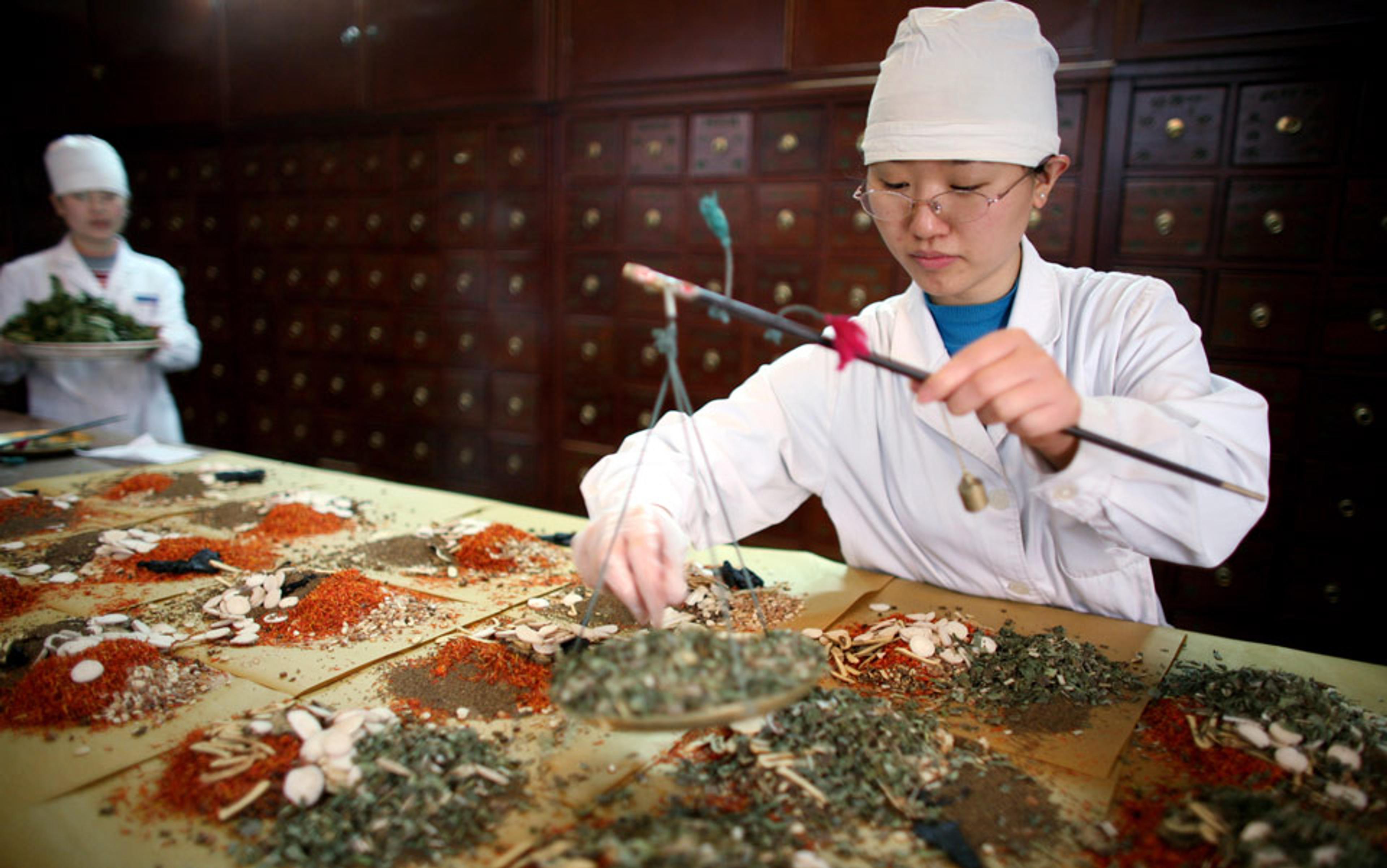
Workers prepare Chinese medicinal herbs. Photo by Natalie Behring/Panos
There are more practical reasons for the popularity of TCM. China, which once had an equitable, if backward, health care system, was ranked 144th in the world for public access to health care, according to a report by the World Health Organisation in 2000. While TCM can be expensive, it’s considerably cheaper than conventional treatment, especially if surgery or scans are involved. For the poor, TCM or folk medicine can offer hope where conventional medicine closes its doors. A pot of herbal medicine boiled on the stove might not cure a leukaemia victim or substitute for unaffordable dialysis, but it provides the small comfort of doing something.
A fear of the modern has crept in, too: new mothers are told to avoid showering or watching TV
The Chinese public also distrusts conventional doctors, and with good cause. For starters, the level of education and training in the conventional health care system is astonishingly low. Only about 15 per cent of ‘doctors’ in Chinese hospitals have an MD, another 20 to 25 per cent have MAs, leaving the vast majority with only bachelor’s degrees in fields related to medicine or biology. Since doctors are severely underpaid, bribery is common, as is over-prescription of both expensive treatments and costly, sometimes fake, drugs. Public anger shows itself in many ways, from online applause for patients who’ve killed doctors in disputes over payment, to the angry crowd that stormed and wrecked a hospital in Guang’an, Sichuan, in 2006, after it was said that a three-year-old boy who had swallowed pesticide was refused treatment because his grandfather didn’t have cash in hand.
Unless you pay through the nose or pull strings, Chinese hospital treatment is a nightmare of bureaucracy, queues, and competition for the doctors’ attention. Some years back, I went to a midlevel Beijing hospital with food poisoning. Getting seen meant going to the main window, paying a fee, being given the name of a doctor on another floor, going to find him, paying a fee, talking to him for two minutes as other patients pushed between us clamouring to be seen, going to have my blood drawn by a nurse, paying another fee, going to the test centre to have it checked, paying a fee, going back to see the doctor carrying a vial of my own blood, pushing past other patients, and being prescribed some drugs and put on an IV drip for three hours in a hospital corridor on a hard plastic seat. For which I paid a fee.
In contrast, going to a TCM doctor is much like going to an alternative medicine practitioner in the West. You spend half an hour or longer talking with a nice, kind, probably quite wise person about your health, your lifestyle, the stresses you’re under, and they give you some sensible advice about diet, looking after yourself, and perhaps a dose of spiritual guidance on top.
Despite its institutional, cultural and popular backing, TCM is always under threat from the competitive edge of conventional medicine. There are outright charlatans who will prescribe TCM for cancer, but the TCM practitioners I talked to all said that for serious problems, with observable and immediate symptoms, they refer patients to conventional treatment. At the Beijing Hospital of TCM, the bulk of the treatments offered were conventional. TCM is strongest where conventional medicine is weak — chronic back pain, migraines, persistent fatigue: elusive conditions for which most doctors, short of an immediate cause, such as a tumour, will essentially throw up their hands and turn to general lifestyle and diet advice. But unlike TCM, evidence-based medicine advances both suddenly and surely.
For decades, erectile dysfunction made up a significant proportion of the TCM market, both in China and overseas. But with Viagra’s entry into the Chinese market in the early 2000s, the use of TCM has shrunk rapidly. A 2005 study in Hong Kong found that a large percentage of the TCM users surveyed had switched to Viagra, even though they stuck with TCM for other everyday ailments. Alongside this, the price of seal penises, once one of the most valued remedies, has dropped dramatically.
But some practices have surged in the past 30 years — and while many of them might have been sensible in the context of an agricultural, pre-modern society, they are actively harmful today, mixed as they are with a false sense of modernity and packaged as medical necessity. Take the insistence upon the ‘sitting month’, or ‘golden month’, a period of 41 days of bed rest for women post childbirth. In a rural society in which women did much of the field work, this was a precaution against infection, and a way to save women from being forced back into manual labour too soon. Parallel practices existed in western Europe, such as the Biblically derived idea of the ‘churching of women’, a blessing given to mothers 40 days after childbirth, which metamorphosed into the ‘lying-in’ or ‘confinement’ of the 19th century.
By the 1940s, Western gynaecologists — newly aware of the dangers of thrombosis caused by immobility — abandoned confinement. Meanwhile, in modern China, the practice was elaborated: not only are there numerous taboos derived from TCM theory, such as that new mothers avoid cold water and raw foods, but the spectre of cancer is invoked to threaten non-believers. ‘My mother didn’t undergo confinement,’ a former colleague in her 30s told me tearily. ‘And that’s why she died of cancer so young, just 15 years later.’ A fear of the modern has crept in, too: new mothers are told to avoid even showering or watching TV.
Another resurgent practice, one that we saw Zhang Mingjuan fall victim to at the start of this essay, is the giving of ‘TCM injections’, which offers the double placebo of supposed herbal benefits with the reassuring presence of the needle. This practice was heavily pushed in the 1980s when the government was keen to promote TCM. According to Fan Minsheng, a professor at the Shanghai University of TCM: ‘During that time, before they put those TCM injections to the market, they didn’t go through the testing processes that Western medicines were subject to.’ In 2012, TCM injections caused more than 170,000 cases of adverse drug reactions, according to figures from the Chinese authorities.
Indeed, the most obvious harm done by TCM is the side effects — and the abysmal failure of both the industry and individual doctors to warn patients about them. It’s routinely claimed that TCM has either fewer side effects than ‘Western medicine’, or no side effects at all; the first is at best unproven, the second is an outright lie, but it is the one most often spouted by experienced doctors nonetheless. Sara Nash, an Israeli grandmother, recently spent a week undergoing TCM treatment for chronic back pain in Hong Kong. However, even she baulked when the doctor prescribed a range of herbal medicines insisting that not only were there no side effects, but there could be none.
In reality, conventional hospitals often find themselves dealing with the side effects of TCM. ‘I personally see at least one person a week with side effects from TCM,’ one doctor working in a major Beijing university hospital told me. I have myself witnessed a friend’s bruised foot swell so grotesquely after he was given TCM that it looked like a special effect from Alien. As a result, he was laid up for two weeks in a conventional hospital. My colleague Kath Naday suffered partial paralysis of her throat and stomach after her diarrhoea was given the TCM treatment, which caused her unspeakable agony until she vomited up the drugs.
Even worse damage can be done by the outright fraudsters who hang off the fringes of TCM. Hu Wanlin was in prison for manslaughter when he opened a medical practice in 1993. Upon his release in 1997, he set up hospitals in the Shaanxi and Henan provinces. His remedies, which contained lethal doses of sodium sulphate, were suspected of killing 146 people in the Zhongnanshan Hospital of Shaanxi alone, and in 1999 he was finally arrested. He is now serving a 15-year sentence for murder.
Shamefully, if unsurprisingly, China’s mainland government has done far less about issuing alerts about dangerous or toxic TCM treatments than the authorities in Hong Kong and the UK. To pick a few examples from the past four years, Anshen Bunao Pian pills, used for treating insomnia, contain 55 times the Chinese mainland’s legal limit for mercury. Zheng Tian Wan, a popular migraine treatment, is packed with aconite, causing potentially fatal heart palpitations and kidney failure. More than 60 per cent of China’s TCM products are blocked from export, according to the World Federation of Chinese Medicine Societies, a government-approved industry group.
Where can we go to buy animal parts?’ he asked me conspiratorially, ‘Tiger, eagle, snake? For medicine! For men’s health!’
Around 30 to 35 per cent of TCM drugs, according to UK and US studies, contain conventional medicines. One of the Beijing pharmacists I spoke to, a thoughtful middle-aged man, freely confirmed this. ‘The Western medicine is so that people get quick relief,’ he told me, ‘But then the Chinese medicine treats the long-term issues they might have.’
Yet he couldn’t tell me exactly what conventional products were contained in the TCM drugs he sold. The conventional ingredients are unlabelled, often in doses far in excess of the norm, or combined with substances that should be available only by prescription. Painkillers are most common, but TCM skin creams often contain powerful steroids that are harmful to children. And in an effort to recapture the market, modern TCM erectile dysfunction products have been found to contain four times the usual dose of Viagra’s competitor Cialis.
The quest for magical ingredients in TCM has also taken a heavy toll on Asia’s wildlife. TCM institutions have officially discouraged the use of endangered animals, but the practice continues even among those who should know better. In 2003, I took a group of Chinese Buddhists to a conference on Buddhism and the environment in Ulaanbaatar, Mongolia. One of them took me aside the day they arrived. ‘Where can we go to buy animal parts?’ he asked me conspiratorially, ‘Tiger, eagle, snake? For medicine! For men’s health!’
The official answer to these problems is further ‘scientification’. Most new government money for TCM goes to ‘scientification institutes’, and hundreds of TCM trials are published every year. But as the anti-TCM campaigner Zhang Gongyao said: ‘The so-called scientification of TCM has been going on for 80 years now, and still has no positive results. Some researchers want the chance to get more money from the government, and scientification is a good target for that.’
Yet scientific, or even ‘scientificated’, treatments might not satisfy the same emotional or symbolic needs that TCM does. The active ingredient in bear bile, ursodeoxycholic acid, has long been identified, synthesised, and proven to be an effective treatment for breaking down gall stones. Yet hundreds of thousands of mainland customers still insist on buying costly bear bile products produced through painful extraction from the gall bladders of live bears. They are backed up by officials like the SATCM director Wang Guoqiang, who falsely claimed in 2012 there is ‘no substitute’ for live production. Besides, the magical association with the bear’s strength and the ‘natural’ production are far more significant to TCM users than the actual effects of the drug.
Real proof would need a massive improvement in the rigour of lab work. I am, at best, an interested amateur when it comes to research methodology, but reading TCM trial reports first-hand makes me wince when I come across sentences such as: ‘We set the control group at half the size of the experimental group, because it would be unethical not to have given more people an effective treatment.’ In the TCM trials published on the mainland, negative results are vanishingly rare. A systematic review of TCM trials conducted in 2009 by the Cochrane Collaboration found that most trials suffered from poor or incomplete data, and expressed severe concerns about methodological flaws.
In one review, the mean average of 7422 surveyed Chinese TCM trials on the Jadad Scale (a standard measurement of quality) was 1.03 out of a possible five, excluding the vast bulk of them from inclusion in clinical reviews. Another assessment, conducted entirely by Chinese researchers, found that only four per cent of some 3000 TCM trials surveyed used adequate methods of blinding and allocation concealment.
Edzard Ernst, emeritus professor of complementary medicine at the University of Exeter, said that ‘the most fundamental problem is that TCM researchers use science not to test but to prove their assumptions. Strictly speaking, this amounts to an abuse of science. It introduces bias on all levels and to such a degree that it is often impossible to identify on the basis of the published research.’
I was told of one TCM case at a provincial university in China where a PhD candidate was instructed by her supervisor to test whether a particular remedy he was keen to promote impeded cancer in rats. When the rats proved as cancerous as ever, he forced her to fake the results.
Poor methodology, aside, there’s a more fundamental, philosophical problem: if traditional Chinese treatments or medicines are proven to work, then they stop being TCM and simply become part of the corpus of global evidence-based medicine. And as Yu Hsien, a doctor writing (pseudonymously) in 1933, aptly noted: ‘The day Chinese medicine is scientificised is the day it becomes cosmopolitanised.’
For me, the vision of sifting the vast range of traditional Chinese treatments through the sieve of evidence — sorting placebo from non-placebo, discerning active components, becoming aware of side effects — seems like a heroic national project, one that would put China on the scientific map and benefit all of humanity. But the idea of applying rigorous evidence-based methods, ultimately eliminating the idea of a separate TCM itself, is unacceptable to institutionalised TCM. ‘Among the scientification researchers, most of them have been refusing to conform to the “Western norm of science” in their lab results, for it is thought to be “unsuitable” for TCM,’ Professor Zhang Gongyao wrote to me, frustrated. ‘The researchers of TCM have no interest in eliminating the placebo effect in their lab work.’
There are also claims that standard research methods simply aren’t applicable to TCM, because ‘the treatment must differ for each individual’, or because ‘a suitable placebo can’t be used’. This massively underestimates the ingenuity of evidence-based researchers in designing robust, reproducible lab tests. German researchers devised a ‘sham acupuncture’ needle in 2001, allowing a plausible placebo, while there have been numerous tests incorporating individualised herbal treatments. ‘There are many adaptations of the trial design which allow us to incorporate virtually all the needs of TCM,’ Edzard Ernst has noted.
Other practitioners still have genuine philosophical objections to the idea that ‘Western metrics’ must be the only measure of medicine. But both in my wide reading and in some teeth-grindingly frustrating conversations, I have never heard or seen a plausible alternative heuristic proposed.
The most common suggestion is that Chinese medicine is simply and purely ‘empirical’, that its efficacy can be judged from experience and practice. It all depends on the jingyan, the ‘experience’ of the doctor, individualised and localised, and passed down from master to favoured apprentice. It ascribes an almost magical intuition to the wisdom and skill of individual doctors, while ignoring the measurable realities of treatment.
And yet, in turn, that experience shouldn’t be dismissed. Whatever the failings of TCM, the skill of individual doctors in dealing with and reassuring patients, if not always curing them, is often visible. When it comes to the lives and health of ordinary Chinese people, the individual experience of good TCM practitioners could be a valuable resource for doctors, both in spanning cultural bridges and in pointing up everyday factors and beliefs that might hinder or benefit treatment.
But this, like the other good things within TCM, cannot be done as long as the pretence that TCM itself is a valid scientific theory continues. Chinese traditions can be wonderful. They can give everyone, not just the Chinese, ways of thinking about how we live and how we see our bodies, and about our relationships with the world and each other. Chinese medicine could be wonderful, too. It could draw upon a rich history of experimentation and curiosity, a broad pharmacopoeia, and a deep concern for the poor and vulnerable, all tempered by modern methods. Both could enrich humanity and be a source of valid national pride at the same time. But for that to happen, Chinese tradition and Chinese medicine alike have to be cut free from the carcass of TCM.
